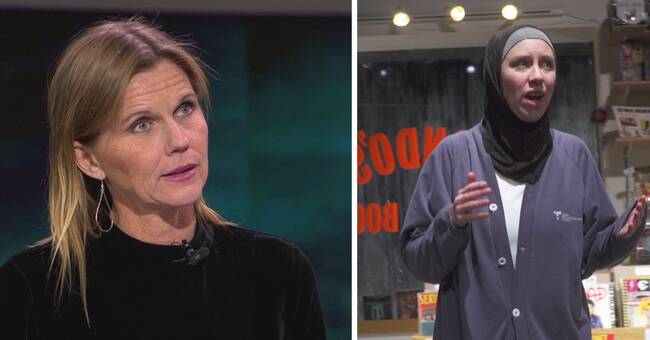Three young Islamists are about to kill a cartoonist who made caricatures of the Prophet Mohamed, but the attack fails and only one of them survives - a girl who ends up in a forensic psychiatric clinic.
She claims that she comes from the future with an important message.
In Unga Klara's production of They Will Drowning in Their Mothers' Tears, director Farnaz Arbabi tackles a science fiction dystopia about nationalism, extremism and fear.
The story is equally
reminiscent of Guantánamo, Harry Martinson and George Orwell.
In the Sweden that is sketched out, the inhabitants are forced to sign a citizenship contract in order not to be classified as enemies of Sweden and sent to Kaningården, where they are forced to become Swedes with totalitarian upbringing methods.
The first act takes its starting point in the comic book store.
We well recognize the well-stocked slopes with comic book albums, newspaper stands, the slightly messy but at the same time homely atmosphere.
The store's owner is not named Charlie Hebdo, but rather Christian Hondo, and the man who is to talk about his satirical comic strip has the white hair on the end.
Yes, Johannes Anyuru's story is close to reality, but also takes great liberties with it.
His August-awarded novel
has several schedules, parallel universes and time jumps.
Dramatizing such a story is of course not an easy journey, but Farnaz Arbabi has skilfully maneuvered the material and streamlined the story so that it essentially remains and moves seamlessly between schedules.
The theater stage also offers opportunities that are not as obvious in novel form.
A concrete portrayal of the girl's possible schizophrenia or alternative life, depending on the schedule and consciousness we move in, is done on stage simply by two different actors portraying her.
In the second act
, the relatively fixed contours of the first act dissolve more and more.
The stage is emptied of scenography and the story is rather carried forward in the actors' bodies with the help of Mikael Karlsson's music.
It shakes about Tina Pour Davoy's girl, who is torn between loyalties.
The light-hearted elements include Robin Keller, who plastically and enjoyably caricatures both the cartoonist and the school curator and shop owner.
For those who have not read the book, it may be difficult to keep up with all the time jumps, but the significant parts of the story - the fear, the exclusion, the effects of the extremist currents - are still so strong that they bite.
Johannes Anyuru's mourning song is frightening, but through the girl's reasoning that time is not a straight line, a belief in possible change is discernible.
We end in the bright hope that the Muslim author's subject of the story will be able to give his daughter a legacy other than insanity.

